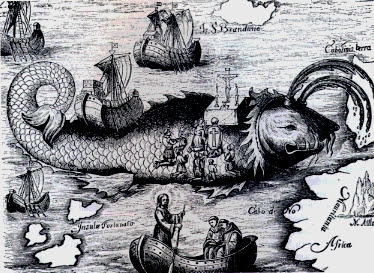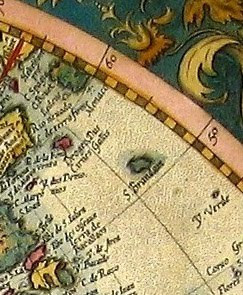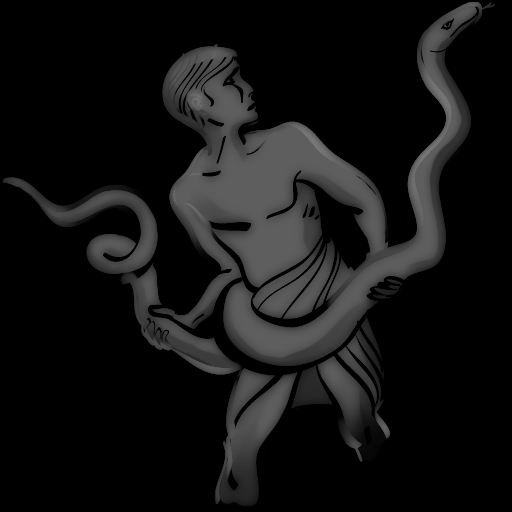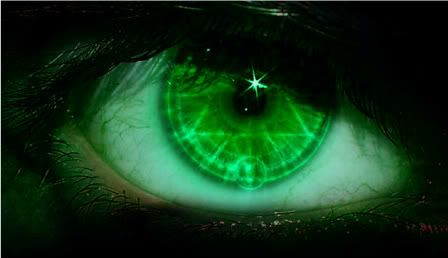Post by MoMo on Mar 14, 2014 10:09:25 GMT -6
Saint Brendan's Island

The Discovery and the Middle Ages
This island is named after Saint Brendan who claimed to have landed on it in 512 together with 14 monks, with whom he held a mass. The monastic party reported its stay as 15 days, while the ships expecting their return complained that they had been kept waiting a year, during which period the island remained concealed behind a thick curtain of mist.
In his Navigatio Sancti Brendan Abbatis, the monk Barino mentioned having visited this same "Paradise" in the Atlantic, a thickly wooded mountainous island where the sun never set and it was always day: the flora were abundant, the trees bore rich fruit, the rivers ran with fresh water, and the birds sang sweetly in the trees.
In Planiferio de Ebstorf (1234), Marcos Martinez referred to "the lost island discovered by St Brendan but nobody has found it since" and in Mapamundi de Hereford (1275) the whole archipelago is described as "The Isles of the Blessed and the Island of St Brendan".

Age of Exploration
The Portuguese writer Luís Perdigão recorded the interest of the King of Portugal after a sea captain informed Henry the Navigator (1394–1460) that he had found the island but was driven off by tumultuous sea conditions. Henry ordered him back: he sailed off but never returned. Christopher Columbus is said to have believed in its existence.
In 1566 Hernán Pérez de Grado, First Regent of the Royal Canary Islands Court, ordered the justices at la Palma, El Hierro and La Gomera to investigate the phenomenon. In his history, Abreu y Galindo reports a conversation with a French adventurer claiming to have visited San Borondon, departing hence when a storm set in and making the voyage to La Palma for shelter within a day. In another report, Alonso de Espinosa, governor of El Hierro, described sighting San Borondon island north west of El Hierro and "leeward" of La Palma. He listed 100 witnesses to the apparition.
Fray Abreu y Galida reported in Historia de la Conquista de las siete Islas Canarias that "the island of Saint Brendan (San Borondon), which is the eighth and last, whose existence may be inferred from sightings of its apparitions, seems to be located at 20 degrees 30 minutes of latitude and eight leagues (40 kilometres) due west of Gomera." (The longitude given in the coordinates is based on the old measurement before the introduction of the Greenwich meridian).

Modern Age
In 1719, the Scottish monk Sigbert de Gembloux reported seeing the island, as did Don Matea Dacesta, mayor of Valverde, El Hierro in 1721. As a result of these sightings, that same year Juan de Mur y Aguerre, military governor of the Canary Islands, appointed a new commission of inquiry under Gaspar Dominguez, a sea captain; no fresh evidence was uncovered and subsequently interest waned. According to the Canary historian Ramirez, in 1723 a priest performed the rite of exorcism towards the island during one of its apparitions behind low cloud. This was witnessed by a large number of persons and sworn to on affidavit.
In 1759 a Franciscan monk mentioned, but not identified by name, by Viera y Clavijo wrote to a friend: "I was most desirous to see the island of San Borondon and, finding myself in Alexero, La Palma, on 3 May at six of the morning, I saw, and can swear to it on oath, that while having in plain view at the same time the island of El Hierro, I saw another island of the same colour and appearance, and I made out through a telescope, much wooded terrain in its central area. Then I sent for the priest Antonio Jose Manrique, who had seen it twice previously, and upon arrival he saw only a portion of it, for when he was watching, a cloud obscured the mountain. It was subsequently visible for another 90 minutes. being seen by about forty spectators, but in the afternoon when we returned to the same point we could see nothing on account of the heavy rain."
In his Noticias, Vol I, 1772, chronicler Viera y Clavijo wrote: "A few years ago while returning from the Americas, the captain of a ship of the Canary Fleet believed he saw La Palma appear and, having set his course for Tenerife based on his sighting, was astonished to find the real La Palma materialize in the distance next morning." Viera adds that a similar entry is made in the diaries of Colonel don Roberto de Rivas, who made the observation that his ship "having been close to the island of La Palma in the afternoon, and not arriving there until late the next day", the officer was forced to conclude that "the wind and current must have been extraordinarily unfavourable during the night."
Further expeditions were organised in the search for the island, but from the 19th century onwards, reported sightings of San Borondon became less frequent. In 1958, D.M. Rodriguez Quintero of Los Llanos de Aridane, La Palma, allegedly obtained a photograph of the island.

The Discovery and the Middle Ages
This island is named after Saint Brendan who claimed to have landed on it in 512 together with 14 monks, with whom he held a mass. The monastic party reported its stay as 15 days, while the ships expecting their return complained that they had been kept waiting a year, during which period the island remained concealed behind a thick curtain of mist.
In his Navigatio Sancti Brendan Abbatis, the monk Barino mentioned having visited this same "Paradise" in the Atlantic, a thickly wooded mountainous island where the sun never set and it was always day: the flora were abundant, the trees bore rich fruit, the rivers ran with fresh water, and the birds sang sweetly in the trees.
In Planiferio de Ebstorf (1234), Marcos Martinez referred to "the lost island discovered by St Brendan but nobody has found it since" and in Mapamundi de Hereford (1275) the whole archipelago is described as "The Isles of the Blessed and the Island of St Brendan".

Age of Exploration
The Portuguese writer Luís Perdigão recorded the interest of the King of Portugal after a sea captain informed Henry the Navigator (1394–1460) that he had found the island but was driven off by tumultuous sea conditions. Henry ordered him back: he sailed off but never returned. Christopher Columbus is said to have believed in its existence.
In 1566 Hernán Pérez de Grado, First Regent of the Royal Canary Islands Court, ordered the justices at la Palma, El Hierro and La Gomera to investigate the phenomenon. In his history, Abreu y Galindo reports a conversation with a French adventurer claiming to have visited San Borondon, departing hence when a storm set in and making the voyage to La Palma for shelter within a day. In another report, Alonso de Espinosa, governor of El Hierro, described sighting San Borondon island north west of El Hierro and "leeward" of La Palma. He listed 100 witnesses to the apparition.
Fray Abreu y Galida reported in Historia de la Conquista de las siete Islas Canarias that "the island of Saint Brendan (San Borondon), which is the eighth and last, whose existence may be inferred from sightings of its apparitions, seems to be located at 20 degrees 30 minutes of latitude and eight leagues (40 kilometres) due west of Gomera." (The longitude given in the coordinates is based on the old measurement before the introduction of the Greenwich meridian).

Modern Age
In 1719, the Scottish monk Sigbert de Gembloux reported seeing the island, as did Don Matea Dacesta, mayor of Valverde, El Hierro in 1721. As a result of these sightings, that same year Juan de Mur y Aguerre, military governor of the Canary Islands, appointed a new commission of inquiry under Gaspar Dominguez, a sea captain; no fresh evidence was uncovered and subsequently interest waned. According to the Canary historian Ramirez, in 1723 a priest performed the rite of exorcism towards the island during one of its apparitions behind low cloud. This was witnessed by a large number of persons and sworn to on affidavit.
In 1759 a Franciscan monk mentioned, but not identified by name, by Viera y Clavijo wrote to a friend: "I was most desirous to see the island of San Borondon and, finding myself in Alexero, La Palma, on 3 May at six of the morning, I saw, and can swear to it on oath, that while having in plain view at the same time the island of El Hierro, I saw another island of the same colour and appearance, and I made out through a telescope, much wooded terrain in its central area. Then I sent for the priest Antonio Jose Manrique, who had seen it twice previously, and upon arrival he saw only a portion of it, for when he was watching, a cloud obscured the mountain. It was subsequently visible for another 90 minutes. being seen by about forty spectators, but in the afternoon when we returned to the same point we could see nothing on account of the heavy rain."
In his Noticias, Vol I, 1772, chronicler Viera y Clavijo wrote: "A few years ago while returning from the Americas, the captain of a ship of the Canary Fleet believed he saw La Palma appear and, having set his course for Tenerife based on his sighting, was astonished to find the real La Palma materialize in the distance next morning." Viera adds that a similar entry is made in the diaries of Colonel don Roberto de Rivas, who made the observation that his ship "having been close to the island of La Palma in the afternoon, and not arriving there until late the next day", the officer was forced to conclude that "the wind and current must have been extraordinarily unfavourable during the night."
Further expeditions were organised in the search for the island, but from the 19th century onwards, reported sightings of San Borondon became less frequent. In 1958, D.M. Rodriguez Quintero of Los Llanos de Aridane, La Palma, allegedly obtained a photograph of the island.









